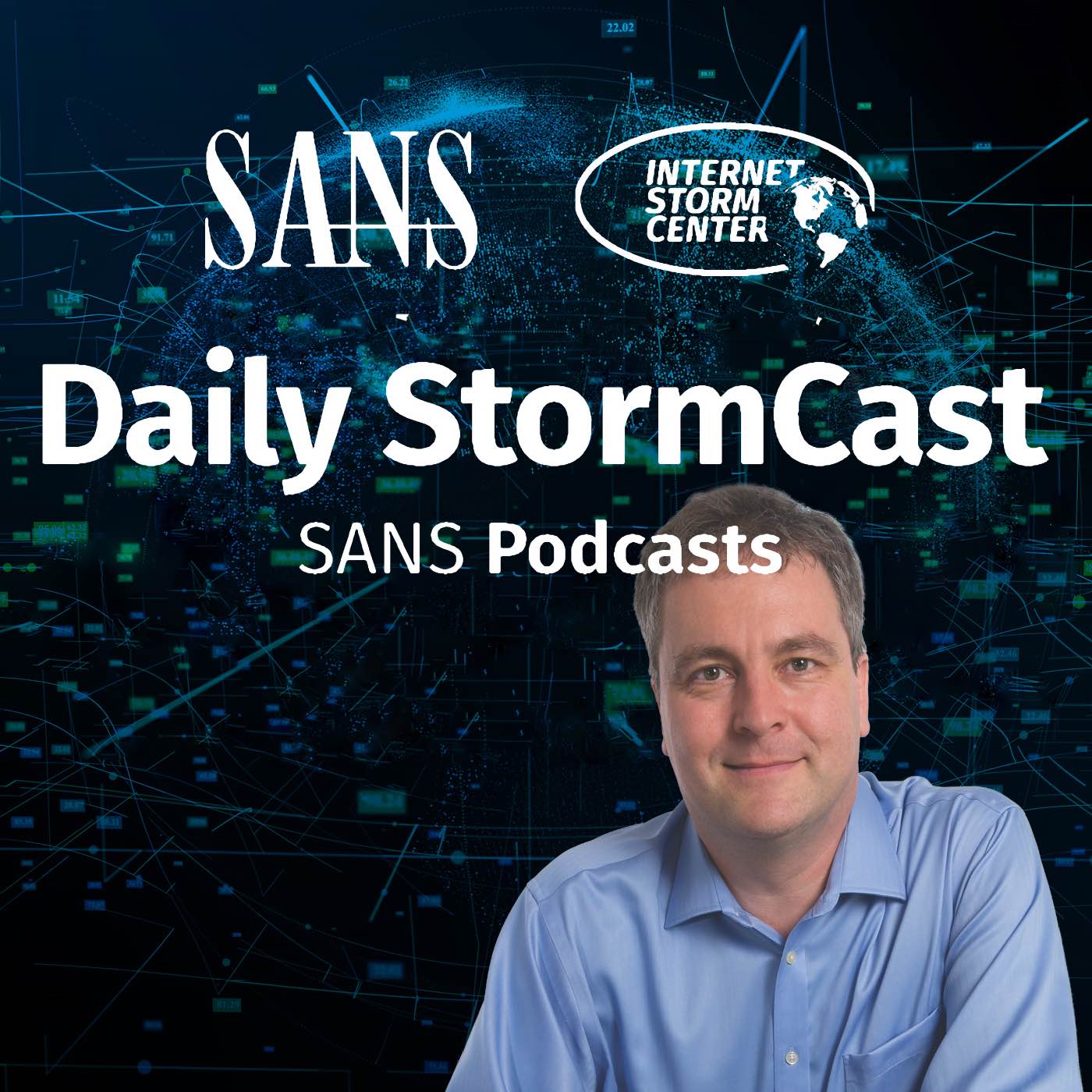Handler on Duty: Johannes Ullrich
Threat Level: green
Podcast Detail
SANS Stormcast Monday, July 28th, 2025: Linux Namespaces; UI Automation Abuse; Autoswagger
If you are not able to play the podcast using the player below: Use this direct link to the audio file: https://traffic.libsyn.com/securitypodcast/9544.mp3
My Next Class
| Application Security: Securing Web Apps, APIs, and Microservices | Las Vegas | Sep 22nd - Sep 27th 2025 |
| Application Security: Securing Web Apps, APIs, and Microservices | Denver | Oct 4th - Oct 9th 2025 |
Linux Namespaces
Linux namespaces can be used to control networking features on a process-by-process basis. This is useful when trying to present a different network environment to a process being analysed.
https://isc.sans.edu/diary/Sinkholing%20Suspicious%20Scripts%20or%20Executables%20on%20Linux/32144
Coyote in the Wild: First-Ever Malware That Abuses UI Automation
Akamai identified malware that takes advantage of Microsoft’s UI Automation Framework to programatically interact with the user’s system and steal credentials.
https://www.akamai.com/blog/security-research/active-exploitation-coyote-malware-first-ui-automation-abuse-in-the-wild
Testing REST APIs with Autoswagger
The tool Autoswagger can be used to automate the testing of REST APIs following the OpenAPI/Swagger standard.
https://github.com/intruder-io/autoswagger/
| Application Security: Securing Web Apps, APIs, and Microservices | Las Vegas | Sep 22nd - Sep 27th 2025 |
| Application Security: Securing Web Apps, APIs, and Microservices | Denver | Oct 4th - Oct 9th 2025 |
| Application Security: Securing Web Apps, APIs, and Microservices | Dallas | Dec 1st - Dec 6th 2025 |
Podcast Transcript
Hello and welcome to the Monday, July 28, 2025 edition of the SANS and the Storm Center's Stormcast. My name is Johannes Ulrich, recording today from Jacksonville, Florida. And this episode is brought to you by the SANS.edu graduate certificate program in cloud security. In diaries this weekend, we have one by Xavier looking into, well, we'll need Linux feature. And Xavier looks at it from sort of a reverse analysis point of view, but it's really very applicable for a number of different security tasks. And that's Linux namespaces. Essentially, each process in Linux may have sort of its own namespace, its own view of the environment. And in this particular case, Xavier looked at networking, where first of all, you are able to just simply turn off networking capabilities for a particular process with the sudo unshare dash dash net bash command. That basically gives you then a bash shell without networking. And now if you try to analyze some malware, well, that malware can no longer communicate outbound. But it goes more fine grain than that. You can also just set up a different routing table for this particular process. And for example, redirect traffic to sinkholes and the like. Quite often when you're analyzing malware, you don't want to turn off networking altogether because the malware will not run if it can't download second stages and such. But you just want to capture like what is that second stage it's downloading and then send the request to a sinkhole where you're just recording the HTTP requests. And that's sort of where this feature is really helpful. But like I said, namespaces in Linux can do a lot more things. There's file systems and mounts and similar features that you have available as you have for networking. And I think it's a little bit an overlooked sort of security feature in general when it comes to Linux. And a lot of even experienced Linux administrators often haven't really heard of namespaces and how they can be used. Well, the next story, I guess, is sort of no good. Deed goes unpunished. Microsoft a couple of years ago came out with UI automation, user interface automation. That's an API that allows software running on a system to better and more simplistically interact with user interface elements. So, for example, software could read the content of Windows or interact with buttons and other user interface elements on the system. That, of course, makes it much easier to script GUI interactions. And, well, attackers are now taking advantage of this. They're now using malware in order to, for example, figure out what software is running on the system, then read the content of various Windows. And if they're, for example, seeing a browser window that is connected to an online banking website, well, they may take advantage of that and then steal credentials as the user enters them. Overall, this is not sort of a fundamentally groundbreaking new capability here that makes Windows a lot less secure. It just makes it a little bit easier for attackers. Attackers in the past have, for example, just used browser plugins in order to steal requests. That sort of works, too. It is a little more generic. It goes beyond browsers. And that just makes things a little bit easier for the attacker to interact these kind of interactions with the user interface. From a defensive point of view, Akamai recommends to basically monitor the UI automation core .dll. That's where you would see earliest requests and interactions like this happening. Basically, what software uses that dll would certainly be something worth paying attention to. And they have here a couple of queries in their blog that will allow you to select and query this interaction from Akamai's own tools. For your tool, whatever you're using to monitor your endpoints, you probably have to figure out how that translates. And then something a little bit different here. Usually, I don't really talk much about tools. But this tool that I just came across and find kind of useful. In particular, since we have so many vulnerabilities in APIs these days. This particular tool, AutoSwagger, is built for APIs that are using the OpenAPI or Swagger standard in order to publish documentation for their APIs. And then the tool does something that's actually really not all that terribly difficult. It reads the specification, which is meant to be machine readable, to then find particular vulnerabilities in the API. For example, various API endpoints that may be leaking PII without requiring authentication. Sounds like a tool that you probably should give a try if you are developing APIs or if you're testing them. The entire process is a little bit like, you know, what you have in SOAP with Whistles. OpenAPI or Swagger for REST APIs is often used to describe the APIs, again, in a standardized machine readable format. Well, and that's it for today. So thanks again for listening and talk to you again tomorrow. Bye.











